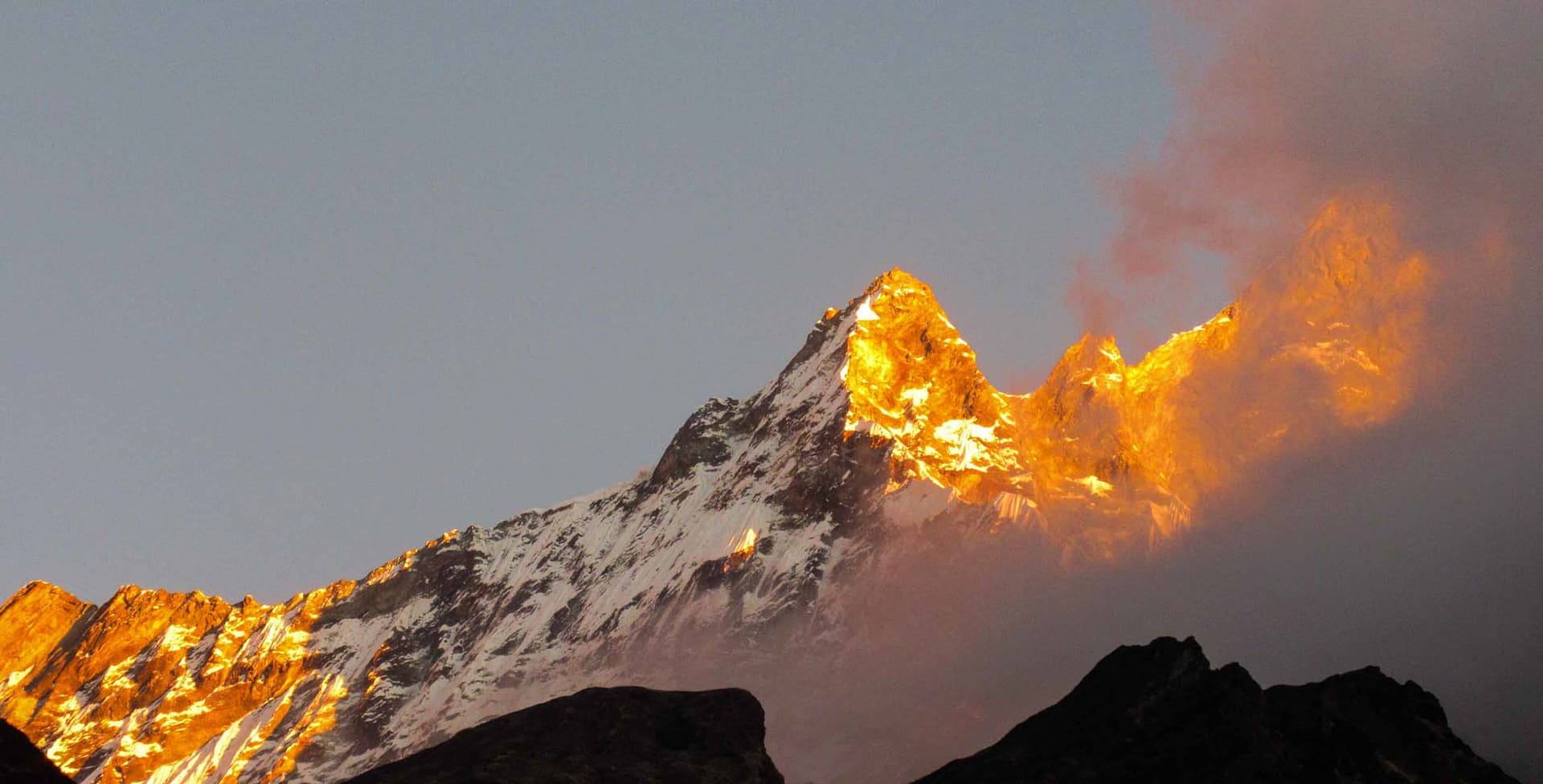Ever dreamed of standing beneath the gaze of the world's 10th highest peak, surrounded by nothing but Himalayan majesty? Yeah, me too. That's the magic of the Annapurna Base Camp trek – it's that rare adventure that delivers jaw-dropping views without demanding Olympic-level fitness.
Over the next few minutes, I'll hand you the exact blueprint for your ABC trek – from the best seasons to go (spoiler: October-November is prime time) to what you'll actually experience on those stunning trails day by day.
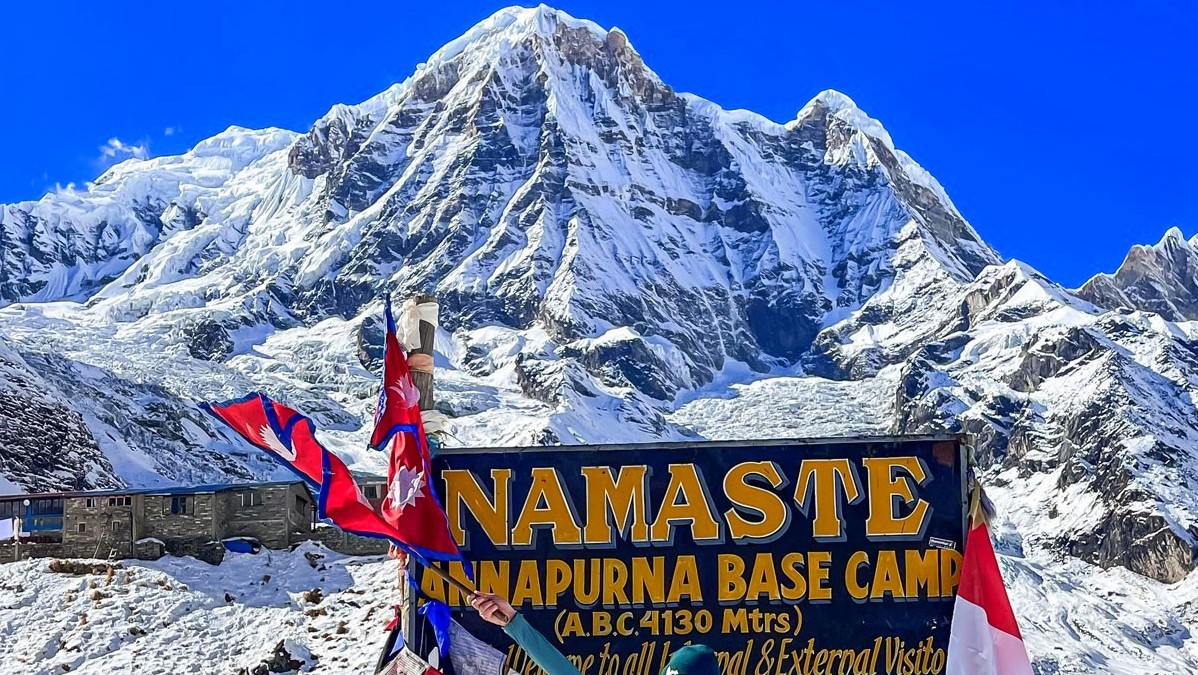
The Annapurna Base Camp trek isn't just another hike; it's a journey through diverse landscapes that shift dramatically as you climb from lush forests to the amphitheater of 8,000-meter peaks.
But here's what most guides won't tell you about reaching that magical 4,130m viewpoint...
Overview of Annapurna Base Camp Trek
Key highlights of the ABC trek experience
The Annapurna Base Camp trek isn't just another hike in Nepal – it's a journey that will leave you speechless at every turn. We've guided countless trekkers through this magical route, and the wonder in their eyes never gets old.
Walking through charming Gurung villages with their stone pathways and traditional homes gives you a genuine glimpse into mountain life. The trail takes you through incredible diversity – from lush rhododendron forests bursting with color in spring to bamboo groves where you might spot langur monkeys swinging overhead.
The real showstopper? That moment when you reach the amphitheater of giants at Annapurna Base Camp (4,130m). Standing surrounded by the massive Annapurna range, Machapuchare (Fishtail), Hiunchuli, and Gangapurna is simply mind-blowing. The sunrise painting these peaks in golden hues is something we never tire of witnessing with our guests.
What makes this trek extra special is how accessible these magnificent mountain views are without extreme altitude challenges. We've designed our itinerary to include proper acclimatization while keeping the adventure exciting and achievable.
Why choose Luxury Holiday Nepal as your trekking partner
We're not just another trekking company – we're locals who've spent our lives exploring these mountains. Our guides know every twist of the trail, every hidden viewpoint, and have personal connections with tea house owners along the route.
Unlike many operators, we keep our group sizes small to ensure you get personalized attention. Having trouble with the altitude? Need your pace adjusted? Our guides notice these things before you even have to mention them.
Safety is our absolute priority. We carry comprehensive first aid kits, oxygen cylinders for emergencies, and our guides are trained in wilderness first aid. We've also got satellite phones to maintain communication in remote areas.
What really sets us apart is our commitment to responsible tourism. We employ local guides and porters, pay them fairly, and invest in their training and equipment. Your trek with us directly supports mountain communities.
Our satisfaction rate speaks for itself – over 95% of our trekkers rate their experience as "exceptional." Many come back to us for their next Himalayan adventure, and that's the greatest compliment we could ask for.
Difficulty level and physical requirements
The Annapurna Base Camp trek falls in the moderate difficulty category – challenging enough to feel accomplished but accessible to most reasonably fit trekkers. You don't need to be an athlete or experienced mountaineer to enjoy this journey with us.
Daily walking times typically range from 5-7 hours, covering distances of 10-15km. The trickiest part? Those famous Nepali staircases! Some days involve climbing thousands of stone steps, which can test even strong knees.
We recommend preparing with some cardio training before your trip – regular walking, jogging, or hiking with a light pack will help tremendously. Building lower body strength particularly helps with those uphill sections.
Altitude is a consideration but not a major concern on this trek. We've crafted our itinerary with proper acclimatization days, and our maximum elevation of 4,130m is below the threshold where severe altitude sickness typically occurs.
Most importantly, our guides are experts at setting a sustainable pace. We always say "bistari, bistari" (slowly, slowly) – the secret to enjoying and completing any Himalayan trek.
Best seasons for the trek
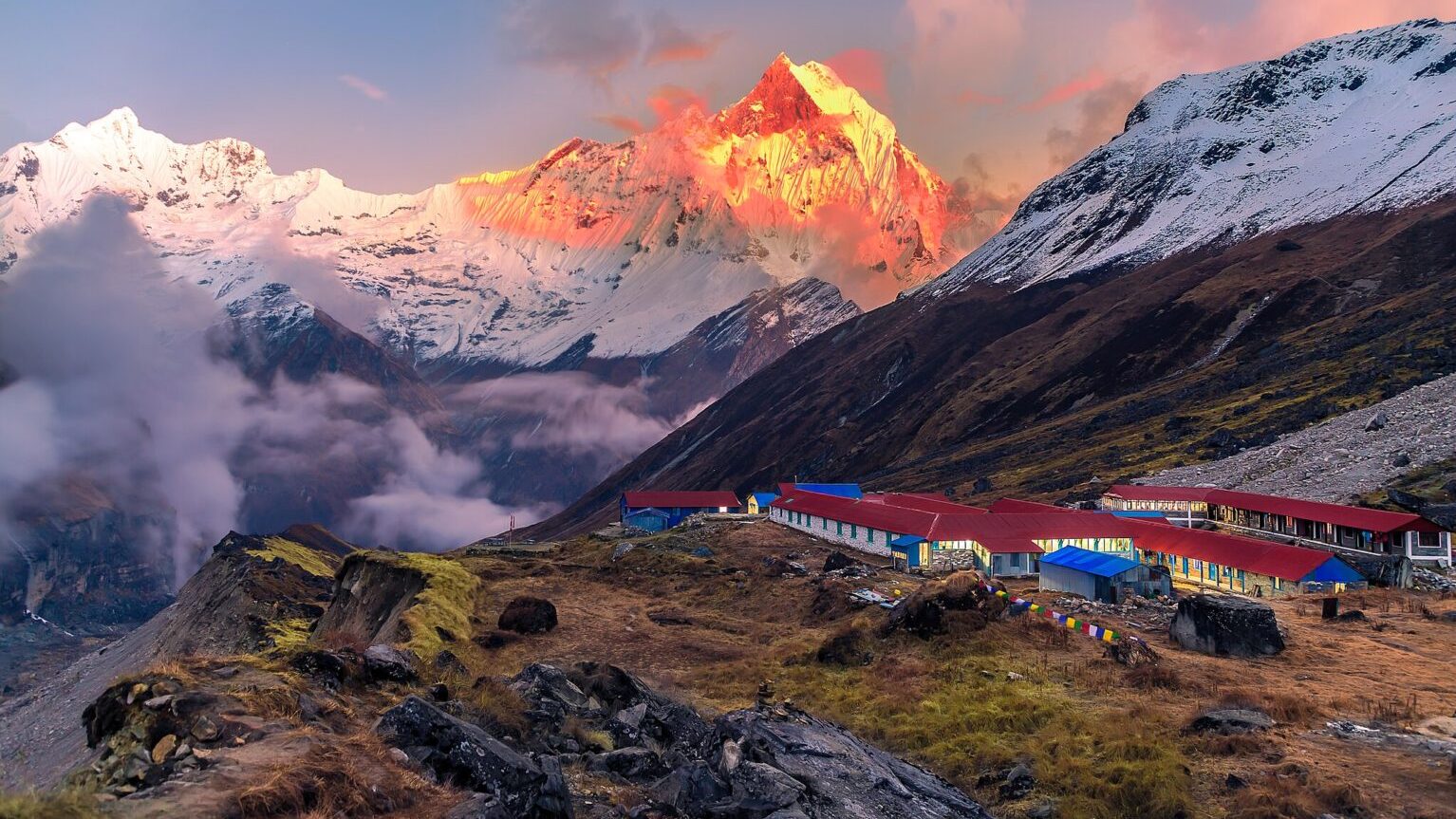
Timing your Annapurna Base Camp trek right can make all the difference in your experience. We've led treks throughout the year, and each season offers something unique.
Fall (September-November) is the gold standard – clear mountain views, stable weather, and comfortable temperatures ranging from 10-15°C during the day and dropping to around 0°C at night at higher elevations. The crisp visibility means those mountain photographs will be frameable masterpieces.
Spring (March-May) brings the mountains to life with blooming rhododendrons creating a riot of reds, pinks and whites against the snowy peaks. The temperatures are similar to fall, though you might encounter the occasional shower as summer approaches.
Winter (December-February) offers the clearest views and the fewest crowds, but you'll need to be prepared for cold nights (-10°C isn't uncommon at base camp). We provide excellent sleeping bags and recommend proper layers for this season.
Summer/monsoon (June-August) is challenging with rain, leeches, and often cloudy views. However, for photographers seeking dramatic cloud formations and lush landscapes, this can be surprisingly rewarding. We bring extra waterproofing and leech socks during these months!
Detailed Itinerary
A. Day-by-day breakdown of the route
Day 1: Kathmandu to Pokhara (827m)
We begin our journey with a scenic 6-7 hour drive or a short 25-minute flight from Kathmandu to Pokhara. This beautiful lakeside city serves as our gateway to the Annapurna region.
Day 2: Pokhara to Nayapul to Tikhedhunga (1,540m)
After breakfast, we take a 1.5-hour drive to Nayapul and start our trek. The trail follows Modi Khola river, passing through small villages and terraced farmlands. We spend our first night in Tikhedhunga after about 4-5 hours of hiking.
Day 3: Tikhedhunga to Ghorepani (2,860m)
This day involves climbing the famous 3,300+ stone steps to Ulleri village. The trail continues through rhododendron and oak forests until we reach Ghorepani, offering our first glimpses of the Annapurna range.
Day 4: Ghorepani to Poon Hill (3,210m) to Tadapani (2,630m)
We wake up early for a sunrise hike to Poon Hill viewpoint—one of the trek's highlights. After returning to Ghorepani for breakfast, we continue to Tadapani through beautiful forests.
Day 5: Tadapani to Chhomrong (2,170m)
Our trail descends through dense rhododendron forests before climbing again to reach the Gurung village of Chhomrong, perched on the hillside with amazing views of Machhapuchhre (Fishtail) mountain.
Day 6: Chhomrong to Bamboo (2,310m)
We descend the famous Chhomrong stone steps before climbing again toward Sinuwa. The trail then enters the Modi Khola valley through dense bamboo and rhododendron forests.
Day 7: Bamboo to Deurali (3,230m)
The trail continues climbing through bamboo forests before opening up as we approach Himalaya Hotel and then Hinku Cave. The vegetation changes as we gain altitude, reaching Deurali by afternoon.
Day 8: Deurali to Annapurna Base Camp (4,130m)
This is our big day! We pass through Machhapuchhre Base Camp (3,700m) before making the final push to Annapurna Base Camp. The landscape transforms into a high-altitude moonscape, with panoramic mountain views surrounding us 360 degrees.
Day 9: Annapurna Base Camp to Bamboo
After sunrise at ABC, we begin our descent, retracing our steps through MBC and Deurali to reach Bamboo.
Day 10: Bamboo to Jhinu Danda (1,780m)
We continue descending to Chhomrong and then to Jhinu Danda, famous for its natural hot springs—perfect for soothing tired muscles.
Day 11: Jhinu Danda to Nayapul, drive to Pokhara
Our final day of trekking takes us to Nayapul, from where we drive back to Pokhara.
Day 12: Pokhara to Kathmandu
We return to Kathmandu by air or road, completing our adventure.
B. Major landmarks and checkpoints
Poon Hill (3,210m)
This famous viewpoint offers spectacular sunrise views of the Annapurna and Dhaulagiri ranges. It's a photographer's paradise and worth the early morning wake-up call.
Chhomrong Village (2,170m)
The last permanent settlement before ABC, this Gurung village features traditional stone houses, terraced fields, and incredible mountain views. It's also your last chance for bakeries and coffee shops.
Machhapuchhre Base Camp (3,700m)
Though not a base camp for climbing (Machhapuchhre is sacred and closed for climbing), this area offers stunning views of the Fish Tail mountain and serves as the final stop before ABC.
Annapurna Base Camp (4,130m)
The ultimate destination, surrounded by a 360-degree panorama of snow-capped peaks including Annapurna I (8,091m), Annapurna South, Hiunchuli, and Machhapuchhre.
Jhinu Danda Hot Springs
Natural hot springs along the Modi Khola river offer the perfect way to relax your muscles after days of trekking. The springs are about 20 minutes downhill from Jhinu Danda village.
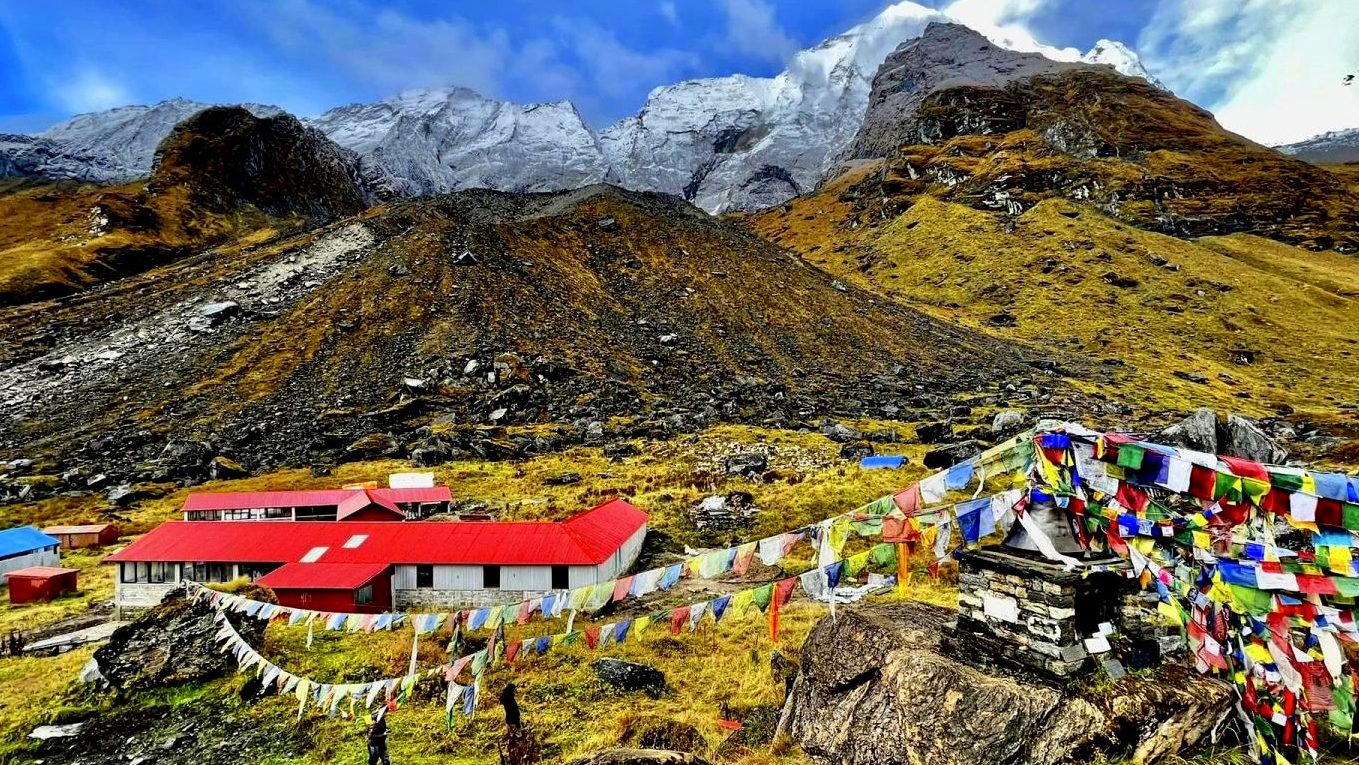
C. Accommodation options along the way
Teahouses
The ABC trek is a classic teahouse trek. These simple mountain lodges offer basic but comfortable accommodation throughout the route. Most rooms are twin-sharing with simple beds and blankets. We recommend bringing your own sleeping bag for additional warmth and hygiene.
Facilities by Altitude:
-
Lower regions (below 2,500m): More comfortable facilities with hot showers (usually for an extra charge), better food variety, and sometimes even Wi-Fi.
-
Mid-altitude (2,500m-3,500m): Basic rooms, shared bathrooms, limited hot water, and fewer menu options.
-
High altitude (above 3,500m): Very basic facilities with limited heating, cold water only, and simple food options.
What to expect:
-
Shared bathrooms are standard in most teahouses
-
Electricity for charging devices is usually available for an extra fee
-
Dining areas are typically the only heated spaces
-
Food gets more expensive as you ascend
D. Alternative routes and customization options
Shorter Itineraries
For those with limited time, we offer a condensed 7-8 day version that uses jeep transportation to bypass certain sections. This option still includes all major highlights but reduces overall trekking time.
Ghandruk Loop Extension
After descending from ABC, you can add an extra day to visit the beautiful traditional Gurung village of Ghandruk, famous for its stone houses and cultural heritage.
Mardi Himal Combination
For more adventurous trekkers, we can combine the ABC trek with the less crowded Mardi Himal trek for a comprehensive 14-16 day experience in the Annapurna region.
Helicopter Return Option
If you're short on time or energy, we can arrange a helicopter pickup from Annapurna Base Camp back to Pokhara, reducing your return journey to minutes instead of days.
Luxury Teahouse Option
In some locations, we can book higher-standard accommodations where available, offering more comfort with private bathrooms and better amenities.
E. Acclimatization days explained
Why Acclimatization Matters
Our itinerary includes strategic acclimatization to prevent altitude sickness as we ascend to 4,130m. These built-in rest days allow your body to adjust to decreasing oxygen levels and are essential for safety and enjoyment.
Key Acclimatization Points:
-
Ghorepani (2,860m): Though not officially an acclimatization day, the overnight stay plus morning hike to Poon Hill helps your body begin adjusting to altitude.
-
Chhomrong (2,170m): While not high enough to require dedicated acclimatization, the relatively easy day from Tadapani gives your body time to prepare for higher elevations ahead.
-
Deurali (3,230m): The day from Bamboo to Deurali involves significant altitude gain but a relatively short distance, allowing for better adaptation.
During Acclimatization:
We recommend light activity rather than complete rest. Short hikes to slightly higher elevations following the "climb high, sleep low" principle help your body adjust more effectively. Stay hydrated and avoid alcohol and tobacco, which can worsen symptoms of altitude sickness.
Monitoring for Altitude Sickness:
Our experienced guides constantly monitor for signs of altitude sickness. If symptoms appear, we may adjust the itinerary or, if necessary, arrange emergency descent. Your safety is our top priority throughout the journey.
Essential Preparations for the Trek
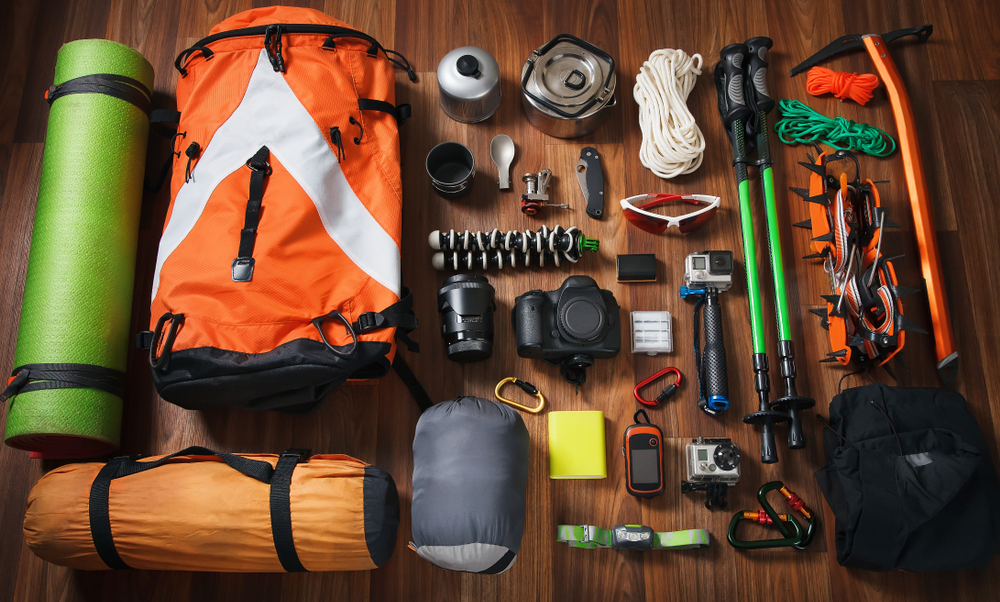
A. Required permits and documentation
You can't just wander up to Annapurna Base Camp without the right paperwork - trust us on this one! We've guided countless trekkers through this process, and two permits are mandatory:
-
TIMS Card (Trekkers' Information Management System) - costs around $10 for individual trekkers
-
ACAP Permit (Annapurna Conservation Area Permit) - costs approximately $30
We recommend arranging these permits in Kathmandu or Pokhara before heading out. You'll need:
-
Passport-sized photos (2-4)
-
Copy of your passport
-
Travel insurance details
-
Emergency contact information
While trekking agencies like ours handle these formalities for our guests, independent trekkers should allocate extra time to obtain these permits.
B. Comprehensive packing list
Packing right makes all the difference between an amazing trek and a miserable one. We've seen it all on the trail! Here's what you shouldn't leave home without:
Clothing:
-
Moisture-wicking base layers (2-3 sets)
-
Insulating mid-layers (fleece/down jacket)
-
Waterproof outer shell (jacket and pants)
-
Hiking pants (convertible recommended)
-
Warm hat, sun hat, and gloves
-
4-5 pairs of hiking socks
-
Sturdy hiking boots (broken in!)
Gear:
-
Backpack (30-40L for teahouse treks)
-
Sleeping bag (rated for at least -10°C)
-
Trekking poles
-
Headlamp with extra batteries
-
Water bottles/purification system
-
Sunglasses (UV protection)
-
Quick-dry towel
Essentials:
-
First aid kit
-
Toilet paper
-
Hand sanitizer
-
Power bank
-
Cash (ATMs are scarce)
C. Physical conditioning recommendations
We won't sugarcoat it - the Annapurna Base Camp trek is challenging. The trail climbs to 4,130m and involves 6-7 hours of daily hiking. Starting your training at least 2-3 months before the trek will pay off enormously.
Our most successful trekkers follow this preparation routine:
-
Regular cardio (3-4 times weekly) - focus on stairs, incline walking, and hiking
-
Strength training for legs and core (2-3 times weekly)
-
Practice hikes with a loaded backpack
-
Gradually increase duration and elevation gain
Even if you're already fit, don't underestimate the impact of altitude. No amount of fitness training fully prepares you for altitude effects, but being in good shape helps your body cope better.
D. Health and safety precautions
The biggest challenge most trekkers face isn't the distance but the altitude. We've helped many trekkers navigate these challenges safely by following these guidelines:
Altitude Sickness Prevention:
-
Trek slowly ("pole pole" as they say in Nepal)
-
Stay hydrated (3-4 liters daily)
-
Avoid alcohol and smoking
-
Consider Diamox after consulting your doctor
-
Follow the acclimatization schedule
-
Descend immediately if symptoms persist
General Health Tips:
-
Get travel insurance that covers helicopter evacuation
-
Bring water purification methods (tablets, SteriPEN, or filters)
-
Pack prescription medications plus basics like pain relievers, bandages, and blister treatment
-
Avoid uncooked foods and tap water
-
Use sunscreen (UV radiation is stronger at altitude)
-
Consider a hepatitis A/B vaccination and typhoid shots
We always advise our trekkers to listen to their bodies. There's no shame in taking an extra acclimatization day or turning back if needed.
Cultural and Natural Highlights
Local communities and cultural experiences
Trekking through the Annapurna region isn't just about stunning mountains - it's a deep dive into Nepal's rich cultural tapestry. We regularly stop at traditional Gurung and Magar villages along the route, where locals welcome trekkers with warm smiles and authentic hospitality.
In villages like Ghandruk and Chhomrong, we enjoy homestays that give us rare glimpses into daily mountain life. The locals share their customs, traditional cooking methods, and sometimes even invite us to join in cultural dances in the evenings. Nothing beats sipping hot chai on a terrace while chatting with villagers about their lives.
Many of our guests tell us their favorite memories aren't just the mountain views but these genuine human connections. We've built relationships with local families over years of bringing trekkers through these areas, creating authentic experiences you simply can't find elsewhere.
Flora and fauna of the Annapurna region
The biodiversity we encounter on the Annapurna trek is simply mind-blowing. Starting in subtropical zones with bamboo forests, we gradually ascend through rhododendron forests that burst into magnificent reds and pinks during spring (March-April).
Wildlife spotting adds excitement to our daily treks. Our guides are experts at pointing out Nepal's national bird, the colorful danphe (Himalayan monal), and if you're lucky, you might spot langur monkeys swinging through trees or catch glimpses of shy Himalayan tahr on distant slopes.
Spring brings wildflowers carpeting meadows in vibrant colors, while autumn showcases golden and amber hues as the forests prepare for winter. We always remind our trekkers to bring binoculars - they're essential for spotting the barking deer, jackals and numerous bird species that call this region home.
Photographic opportunities and viewpoints
Photographers, both amateur and professional, find paradise on this trek. We know exactly where to pause for those jaw-dropping shots that'll make your Instagram followers green with envy.
Poon Hill sunrise tops our list - arriving before dawn, we watch first light hit Dhaulagiri, Annapurna South, and Machapuchare (Fishtail Mountain) in golden hues. The panorama from here spans over 10 major peaks and deserves every bit of its famous reputation.
Another favorite spot is the natural viewpoint at Annapurna Base Camp itself, where we're completely surrounded by a 360° amphitheater of towering peaks. The changing light throughout the day creates different moods - from crisp morning clarity to dramatic afternoon cloud formations and alpenglow at sunset.
We always suggest carrying extra batteries and memory cards - trust us, you'll need them! The combination of dramatic landscapes, authentic village scenes, and diverse wildlife means your camera rarely gets a rest.
Sacred sites and temples along the route
The spiritual dimension of our trek adds profound depth to the journey. We pass numerous prayer flags fluttering in mountain breezes, spreading blessings across the valleys.
In Ghandruk, we often visit the small but significant local temple where trekkers can observe traditional prayer ceremonies. Further along the trail, ancient shrines decorated with colorful prayer flags mark sacred spots where locals have worshipped for generations.
One particularly special moment comes at Annapurna Base Camp itself, where a small shrine honors climbers who lost their lives on these mountains. Many of our trekkers find this a powerful place for reflection, surrounded by the very peaks that have inspired reverence for centuries.
These sacred sites remind us that to local communities, these aren't just mountains - they're the homes of deities and spirits that protect the land and its people. Respecting these beliefs is essential as we pass through, and our guides always explain the proper etiquette around religious sites.
Practical Information
Budget considerations and cost breakdown
Trekking to Annapurna Base Camp doesn't have to break the bank. We've broken down the costs to help you plan better:
Permits:
-
ACAP (Annapurna Conservation Area Permit): $30
-
TIMS Card (Trekkers' Information Management System): $20
Accommodation:
-
Teahouses: $3-10 per night (prices increase with altitude)
-
Hot showers: $2-5 (optional)
Food and Drinks:
-
Simple meals: $5-8 per meal
-
Tea/coffee: $1-3
-
Bottled water: $1-4 (prices double as you climb higher)
Guide and Porter:
-
Guide: $25-30 per day
-
Porter: $20-25 per day (carries up to 15kg)
Transportation:
-
Kathmandu to Pokhara: $7-25 (bus to tourist bus)
-
Pokhara to trailhead: $10-15
For a 7-10 day trek, budget $500-800 per person for a comfortable experience, or $350-450 if you're going without guides and watching expenses closely. We always recommend keeping an extra $100-150 for emergencies or unexpected expenses.
Communication and internet availability
Don't expect perfect connectivity, but you won't be completely off the grid either. Most teahouses along the ABC trek now offer Wi-Fi, though with varying reliability.
Wi-Fi availability:
-
Lower regions (up to Chhomrong): Good coverage
-
Middle sections: Spotty but available
-
Higher sections (after Deurali): Limited
Wi-Fi costs typically range from $2-5 per day or $1-2 per hour. The connection quality weakens significantly at higher altitudes.
For cellular service, NTC (Nepal Telecom) and Ncell provide the best coverage. We suggest purchasing a local SIM card in Kathmandu or Pokhara (around $10 with data). NTC generally has better coverage in remote areas, while Ncell offers faster data in populated zones.
Many trekkers now bring portable power banks with their devices – a smart move we heartily endorse.
ATM and money exchange facilities
Cash is king on the Annapurna trail. There are no ATMs once you start trekking, so plan accordingly. The last reliable ATMs are in Pokhara, where we recommend withdrawing enough Nepalese Rupees to cover your entire trek plus some buffer.
Most teahouses only accept cash, though a few larger establishments in Chhomrong might accept cards with hefty surcharges (3-5%). Currency exchange facilities are practically non-existent on the trail.
Cash planning tips:
-
Calculate daily expenses ($30-40 per day is reasonable)
-
Add 30% extra for contingencies
-
Carry smaller denominations (Rs. 100, 500, 1000 notes)
-
Keep money in waterproof bags and different locations
Electricity and charging options
Power availability improves every year but remains inconsistent. Most teahouses offer charging facilities, but there's usually a fee:
-
Rs. 100-300 per device charge ($1-3)
-
Rs. 200-500 for full camera battery charge ($2-5)
Power outages are common, especially during peak season when teahouses are crowded. Solar power has become increasingly popular, but cloudy days can limit availability.
Our tried-and-true power strategy:
-
Bring a quality power bank (20000mAh minimum)
-
Carry a multi-USB charging adapter
-
Charge devices opportunistically when power is available
-
Put devices in airplane mode when not needed
-
Consider solar chargers for longer treks
Water purification methods
Clean drinking water is essential, and buying bottled water gets expensive (and creates plastic waste). We strongly recommend bringing water purification methods:
Popular purification options:
-
Water purification tablets: Affordable ($10-15 for 100 tablets)
-
SteriPEN UV purifier: Effective but battery-dependent ($80-120)
-
LifeStraw or Sawyer filters: Reliable mechanical filtration ($30-50)
-
Boiled water: Available at teahouses (Rs. 100-150 per liter)
Many teahouses now offer filtered water refills at lower costs than bottled water. Since 2020, we've noticed more water stations appearing along the route as part of local conservation efforts.
Carrying a reusable water bottle with a wide mouth makes both filling and purifying easier. We typically carry two 1-liter bottles to ensure we always have enough water during longer hiking sections.
Luxury Services by Luxury Holiday Nepal
Premium Accommodation Options
We know that trekking doesn't mean you have to rough it all the way. At Luxury Holiday Nepal, we've handpicked the finest accommodations available along the Annapurna Base Camp trail. While standard teahouses are the norm, we secure the best rooms with private bathrooms whenever possible. In lower elevations, we offer luxurious lodges with hot showers, comfortable beds, and even heated blankets—a true blessing after a long day on the trail.
Our premium packages include stays at properties like Ker & Downey lodges in areas where they're available, giving you cozy rooms with stunning mountain views. Nothing beats sipping hot chocolate from your private balcony while gazing at the Himalayas!
Gourmet Dining Experiences
Trail food doesn't have to be boring. We've revolutionized dining on the Annapurna trek by bringing in trained chefs who prepare incredible meals using fresh, local ingredients. Forget basic dal bhat every night—our trekkers enjoy diverse menus featuring both Nepali specialties and international comfort foods.
We arrange special dining experiences like candlelit dinners at scenic spots and surprise celebration meals for birthdays or anniversaries. Our team carries select ingredients from Kathmandu to ensure quality, and we always accommodate dietary restrictions without compromising on taste.
Personalized Guide Services
Our guides aren't just trail leaders—they're experienced professionals with deep knowledge of the region. We match you with guides based on your interests, whether that's photography, wildlife, local culture, or mountaineering history.
Each guide speaks excellent English and receives continuous training in first aid and emergency response. Many have summited major peaks and bring fascinating stories to share during your trek. Unlike standard agencies, we limit group sizes to ensure personalized attention, and our guides are expert at pacing the journey to match your fitness level.
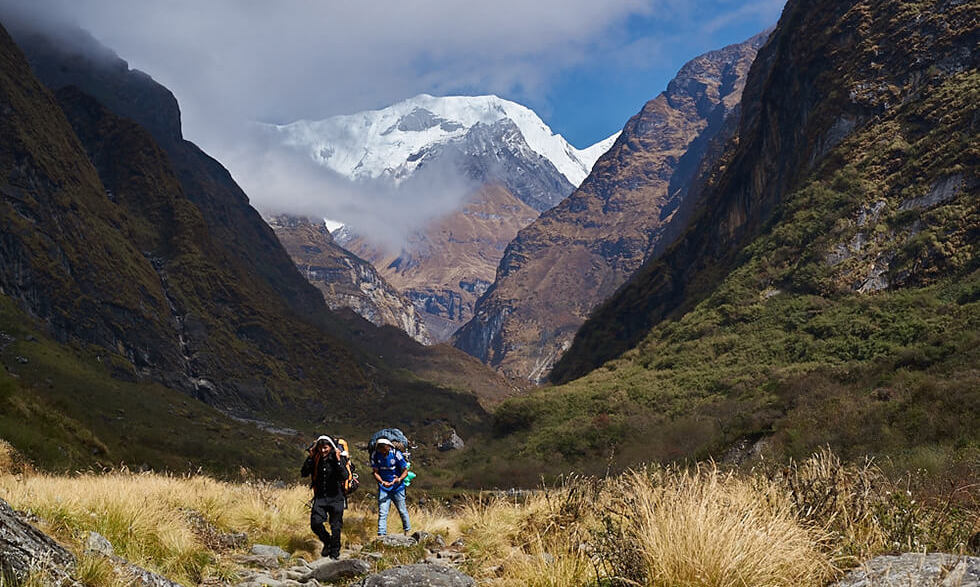
Porter and Support Staff Benefits
We're proud that our porters and support staff are the best-treated in the industry. They receive proper equipment, insurance, fair wages well above the industry standard, and carry weight limits that protect their health.
Our porters aren't just luggage carriers—they're integral team members who enhance your experience. Many are training to become guides themselves and love sharing insights about their home regions. We invest in educational opportunities for our staff, and a portion of your trek cost goes directly to our porter welfare fund, which provides medical care and educational scholarships for their families.
Health and Safety
Altitude sickness prevention and treatment
We know that altitude sickness is a real concern when trekking to Annapurna Base Camp, which sits at 4,130 meters. The golden rule we always follow? Ascend slowly. We plan our itineraries with proper acclimatization days built in - this isn't just a suggestion, it's essential.
Drinking at least 3-4 liters of water daily helps tremendously. We've seen too many trekkers skimp on hydration and pay the price. Avoiding alcohol and heavy meals also makes a huge difference.
If you start feeling headaches, dizziness, nausea, or trouble sleeping, tell your guide immediately. These are warning signs. Our guides carry Diamox, which can help with mild symptoms, but the best treatment is often descending to lower altitude.
Emergency evacuation procedures
Nobody plans for emergencies, but we're always prepared. Our guides carry satellite phones and emergency contact details at all times. If you need evacuation, our team coordinates helicopter rescues from designated points along the trail.
The closest major medical facilities are in Pokhara, with more advanced care available in Kathmandu. We've established relationships with local rescue teams and hospitals to ensure swift action when needed.
Travel insurance requirements
We absolutely insist all our trekkers purchase comprehensive travel insurance before setting foot on the trail. Your policy must cover:
-
High-altitude trekking (up to 4,130m)
-
Emergency helicopter evacuation
-
Medical expenses with adequate coverage
-
Trip cancellation protection
We recommend taking photos of your insurance documents and keeping digital copies accessible on your phone. Trust us, this small precaution makes a world of difference in emergencies.
First aid essentials
Our guides carry comprehensive first aid kits, but we always recommend bringing your own personal supplies:
-
Diamox (consult your doctor first)
-
Pain relievers (ibuprofen/paracetamol)
-
Blister treatment supplies
-
Broad-spectrum antibiotics
-
Rehydration salts
-
Anti-diarrhea medication
-
Band-aids and antiseptic cream
Personal medications are your responsibility - bring extra in case of delays. We've found storing medicines in waterproof containers prevents damage from Nepal's sometimes unpredictable weather.
Post-Trek Activities
Relaxation Options in Pokhara
After conquering the Annapurna Base Camp trek, we believe there's no better place to unwind than Pokhara. This lakeside paradise offers the perfect backdrop for recovery.
Phewa Lake calls to tired trekkers – rent a boat and drift along its calm waters while soaking in mountain reflections. We often recommend our guests spend an afternoon here just breathing in the tranquility.
The numerous cafés along Lakeside provide ideal spots to relax with a book and a cup of authentic Nepali tea. Our favorite is sitting with a warm drink, watching the world go by as the sun sets behind the Annapurnas.
For those seeking more active recovery, Pokhara's yoga studios offer rejuvenating sessions. Many of our clients have found these classes perfect for stretching tired hiking muscles.
Kathmandu Exploration Recommendations
Back in Kathmandu, cultural immersion awaits! We recommend starting at Durbar Square – despite earthquake damage, it remains a stunning showcase of Nepali architecture.
Don't miss Swayambhunath (Monkey Temple) for panoramic city views and fascinating Buddhist culture. Morning visits offer the most peaceful experience.
Thamel's maze of shops provides the perfect opportunity to pick up souvenirs. We've found the best deals on singing bowls and prayer flags here, but remember to bargain!
The Garden of Dreams offers a quiet escape from Kathmandu's busy streets – this neo-classical garden is our go-to recommendation when travelers need a peaceful moment.
Additional Short Treks and Excursions
Still got adventure in your blood? We've got options!
The Nagarkot day hike offers stunning Himalayan panoramas without the commitment of a multi-day trek. It's just a short drive from Kathmandu and perfect for sunrise views.
For wildlife enthusiasts, we arrange Chitwan National Park excursions. A 2-3 day stay lets you spot rhinos, crocodiles, and if you're lucky, Bengal tigers.
Paragliding in Pokhara gives you a bird's-eye view of the landscapes you've just trekked through. The thermals here are world-class, and the experience is unforgettable.
Spa and Wellness Treatments
Your body deserves some pampering after challenging trails. We've partnered with several spas in both Pokhara and Kathmandu that specialize in trekker recovery.
Traditional Ayurvedic massages work wonders on trail-weary muscles. The combination of warm oils and pressure point techniques helps release built-up tension.
Himalayan salt treatments are another favorite among our clients. These detoxifying sessions cleanse away not just physical fatigue but mental stress too.
For the ultimate indulgence, we recommend a full spa day including a hot stone massage, reflexology, and a facial using local herbal products. Your body will thank you!
Embarking on the Annapurna Base Camp Trek presents an unparalleled opportunity to witness Nepal's stunning landscapes while experiencing its rich cultural heritage. From meticulous preparation and proper acclimatization to discovering diverse flora and fauna, this journey offers memories that last a lifetime. Throughout the trek, Luxury Holiday Nepal ensures your comfort, safety, and enrichment with their premium services and knowledgeable guides.
The magic of Annapurna doesn't end at Base Camp – extend your adventure with post-trek activities that complete your Himalayan experience. Whether you're an experienced trekker or first-time visitor to Nepal, the Annapurna Base Camp Trek stands as a testament to nature's grandeur and human endurance. Pack your bags, prepare your camera, and get ready for an adventure that will transform your perspective on mountain landscapes and Nepalese hospitality.
Please, click here for the various other options for Annapurna Region Trekking Packages.
If you need any further information, please contact us, Email: at [email protected], Phone: +977- 985 100 5129 (WhatsApp)

